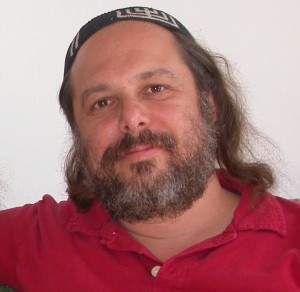What strikes me as I read this week’s parsha (weekly Torah portion) was how I have been seen the first two books of the Torah: Genesis (Breshiet in Hebrew) and Exodus (Shmot in Hebrew). In Breshiet I found myself seeing some little aspect within a parsha, while in Shmot I am finding much larger themes; themes that exist over many parshas. I don’t know why that is. At the moment, I just find it an interesting observation. If anybody out there has an idea as to why, please comment here and share your ideas.
This week’s parsha consisted of the details of haShem’s (god’s) conversation with Moshe (Moses) in regards to how the tabernacle or tent-of-meeting needs to be made. It started out with haShem telling Moshe what materials the people need to provide and the purpose of the tent-of-meeting.
Let’s go back to the project management model I mentioned last week. We were given a mission statement (a nation of priests) and a general outline of how to achieve this (the 10 utterances) (from parsha Yitro). Finally these were broken into more specific modes of conduct that could be tied into the 10 statements (parsha Mishpatim).
In project management, after you decide on the mission statement and what steps are needed to accomplish the project, you need to know what are your resource requirements. For example, if you want to read the bible, you will need to have access to a bible. The bible is now a resource requirement. HaShem provides us with resource requirements in two ways: First, by specifying what materials are needed, and second by going into detail on how to build the tent-of-meeting. This detail, how big the curtains need to be as well as how many curtains, tell us how much of each resource is needed. After all, you need to know exact details of what you are building in order to know what materials, and how much of each material you need.
What is also nice about this parsha is that it shows us that you can have a project within a project. The tent has a purpose: a sanctuary for haShem, so he can be with the people. And it has requirements: building an ark, an ark cover, a table, a menorah, the tent itself, the altar, and the courtyard. And now we have the resource allocation and details on how to do each of the requirements. Pretty nifty, no?
Well, that’s it for me for now. I hope you all had a good week and have a great shabbat.
About the Author
 Shmuel Shalom Cohen spent 10 years studying Torah in Jerusalem. Six years ago, he started Conscious Torah to help Jews connect to their tradition in ways they didn’t think possible. Shmuel also started, and is the executive directory of Jewish Events Willamette-valley, a non-profit whose mission is to build Jewish community, pride, and learning. In his free time, Shmuel likes walks in nature, playing music, writing poetry, and time with good friends.
Shmuel Shalom Cohen spent 10 years studying Torah in Jerusalem. Six years ago, he started Conscious Torah to help Jews connect to their tradition in ways they didn’t think possible. Shmuel also started, and is the executive directory of Jewish Events Willamette-valley, a non-profit whose mission is to build Jewish community, pride, and learning. In his free time, Shmuel likes walks in nature, playing music, writing poetry, and time with good friends.